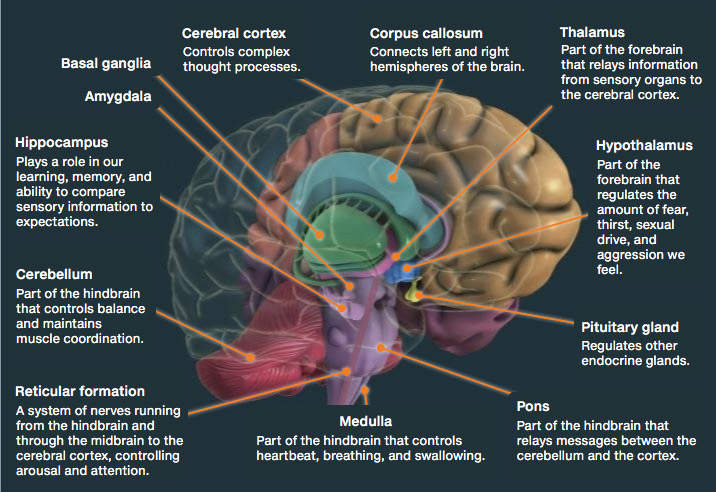

In addition to oculomotor nerve palsy and ataxia, there is damage to the corticospinal tract, resulting in contralateral weakness. Benedikt's syndrome: Like Claude's syndrome, this condition results from a stroke within the tegmentum of the midbrain.It results in ipsilateral oculomotor nerve palsy with contralateral cerebellar ataxia (incoordinated movements). Claude's syndrome: This condition results from a stroke within the dorsal (upper side) tegmentum of the midbrain.It results in ipsilateral (same-sided) third nerve palsy and contralateral (opposite side) weakness. Weber's syndrome: Also known as midbrain stroke syndrome and superior alternating hemiplegia, this condition is caused by a stroke in a branch of either the basilar artery or the posterior cerebral artery.

Symptoms may include a downward gaze at rest, pupils that are poorly reactive to light, eyelid retraction, and convergence-retraction nystagmus (when you have uncontrollable, jerky eye movements)

Red nucleus: This region is involved in motor coordination.Corticospinal tract: This major nerve pathway carries movement-related information from the brain to the spinal cord.Spinothalamic tract: This major nerve pathway carries information about pain and temperature sensation from the body to the thalamus of the brain.The trochlear nerve nuclei innervate the superior oblique muscle of the eye, which abducts, depresses, and internally rotates the eye. Cranial nerve nuclei: Oculomotor nerve nuclei are responsible for controlling the pupil and most eye movements.Recently, this structure has been linked to controlling the defensive reactions associated with post-traumatic stress disorder (PTSD). Periaqueductal gray (PAG) matter: This area plays a primary role in processing pain signals, autonomic function, and behavioral responses to fear and anxiety.Reticular formation: This highly diverse and integrative area contains a network of nuclei responsible for many vital functions including arousal, consciousness, sleep-wake cycles, coordination of certain movements, and cardiovascular control.


 0 kommentar(er)
0 kommentar(er)
